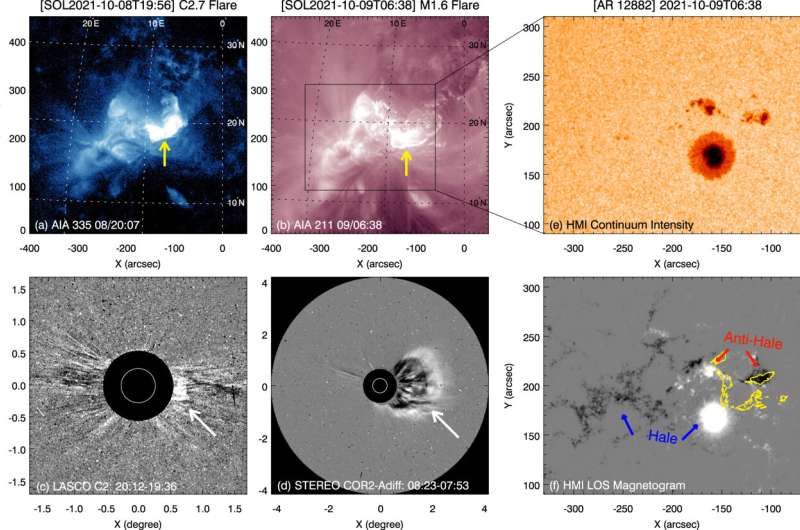Evolution of emerging anti-Hale region and associated eruptive solar flares

Dr. Xu Zhe, Prof. Yan Xiaoli and colleagues from the Yunnan Observatories of the Chinese Academy of Sciences have revealed how an active region (AR) evolves, re-configures the upper coronal structures, and eventually contributes to solar eruptions. Results were published in The Astrophysical Journal Letters.
Solar active regions rarely violate the Hale-Nicholson rule, but once these regions formed, they tend to be flare-productive. Using the joint observations from the New Vacuum Solar Telescope and the Solar Dynamics Observatory, the researchers investigated the evolution of an emerging anti-Hale region and its associated solar flare eruption.
They found that in NOAA AR 12882, magnetic energy and helicity were supplied to the corona by the new emergence and strong shearing motions of an anti-Hale bipole near the preexisting sunspot. A magnetic flux rope was formed simultaneously in the upper atmosphere with the ejection of magnetic helicity. The successful eruptions of this flux rope eventually produced C-class and M-class flares.
In particular, a cusp structure was observed to form near the post-flare loops, suggesting an interaction between the emerging anti-Hale region and the preexisting active region.
As the researchers claim, the flux emergence in a proximity to an existing sunspot and the anti-Hale orientation of a bipole, have been recognized as keys to produce strong flares. This AR 12882 hosting both characteristics at the same time is important for understanding the origin of solar flares.
More information: Zhe Xu et al, Evolution of an Emerging Anti-Hale Region and its Associated Eruptive Solar Flares in NOAA AR 12882, The Astrophysical Journal Letters (2022). DOI: 10.3847/2041-8213/ac8fef
Journal information: Astrophysical Journal Letters
Provided by Chinese Academy of Sciences




















